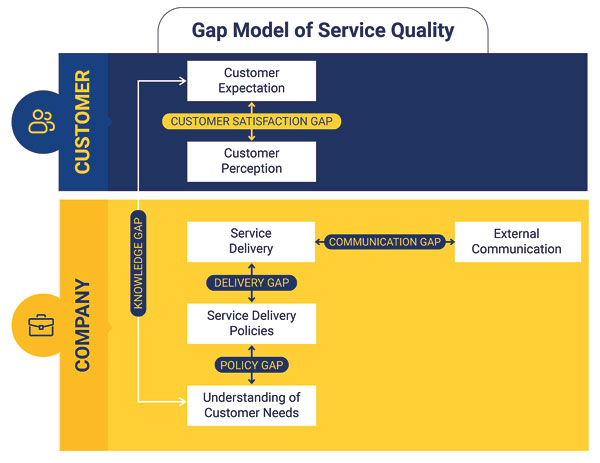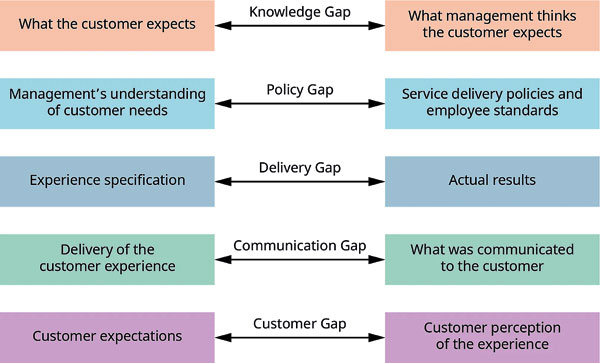Moment of Truth Part ii – Bridging Service Quality Gaps
View(s):The moment of truth, which has grown to be a crucial component of service delivery, was the subject of last week’s discussion. As more people make purchases online, Zero Moment of Truth is likewise becoming into a widely applicable concept. The significance of conducting training and developing personnel in the services sector was emphasised at the conclusion of the article from last week. Let’s take a closer look at the Gap Model and how the gaps can be minimised in detail with today’s article in order to gain a better grasp.
1. Knowledge Gap – Market research can mostly fill this one. However, there are times when a strategist’s gut instinct or that of the marketing and branding teams might reveal what the target market genuinely wants. In fact, it is impossible for research to determine what customers really want to be 100% correct.
2. Policy Gap – How do strategists or marketing/branding experts translate their knowledge of client wants into standards for service delivery? This is essential since the workforce needs to be trained.
3. Delivery Gap – Do service company employees genuinely uphold the standards set forth in their training? Exist any discrepancies between the standards’ requirements and what is actually provided?
4. Communication Gaps – Marketers frequently create extravagant ads to advertise their services without even being aware of the resources they have available to provide them. The fact that the proposals can only be bolted on rather than built-in can be problematic. For the commercial, the creative firm would create a plot that was not even remotely true to life.
Customer happiness is always a matter of opinion. While one customer may be delighted with a certain service, another who receives the same service at the same service encounter may not be as pleased about it. This happens as a result of them developing expectations based on either past experiences, word-of-mouth, or marketing advertisements. A gap results if the actual experience falls short of the level anticipated.
The brand marketer is in control of items 1, 2, 4, and 5 out of the five because they require research-based conclusions to be implemented. However, it takes intensive training given to the front line to close the third gap, which is the delivery gap. In order to reduce gaps in the service delivery process, the RATER is frequently employed as a model. This was briefly covered in the article from the week before as well, but I wanted to go into more detail this week.
Although the emphasis has traditionally been on training staff members who would work at front desks and other customer contact points, I think it’s also important to train the internal supporting staff. It is clear that the back-office operations adopt an authoritarian and controlling position even while the individuals at the consumer touch points are attempting to provide a great service. The delivery of end-customer needs is not given as much priority as following internal norms and processes. Internal politics are sometimes clearly visible when the front desk employee is criticised by the supporting functions with the purpose of making things challenging with private motives. These mishaps never appear on the dashboards or KPIs.


As the previous post concluded by emphasising on the need of saving the world from poor customer service, I would want to reiterate the same point this week as well by bring to your attention the inside perspective of customer service. Therefore, it’s utmost important to train people not only with technical skills, but also for their attitude and behavioural changes.
HitAd.lk is the best and biggest mobile phone market in Sri Lanka, and we guarantee you will find what you need here from our extensive listing of mobile phones for sale in Sri Lanka. Whether it’s a budget-priced smartphone for communication, or higher end features with advanced connectivity, there are many different options from which to choose from on our site!


